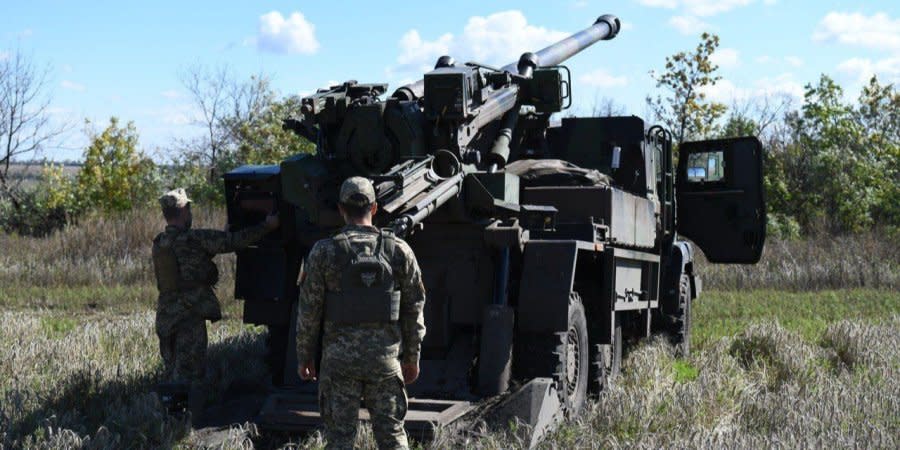Russian defenses collapse in northern Kherson Oblast while Ukrainians push ahead in Luhansk, says ISW

- Oops!Something went wrong.Please try again later.
Read also: Explosions rock hotel in occupied Kherson, rumored to quarter FSB officers
In Kherson Oblast, Ukrainian troops liberated several settlements on the eastern bank of the Inhulets River along the T-2207 highway, forcing Russian troops to retreat south towards Kherson, ISW analysts said.
Read also: Ukrainian Army liberates several settlements in Kherson Oblast
Ukrainian forces also continue to push south along the Dnipro River and T-0403, cutting two Russian ground lines of communications (GLOK) in the north of Kherson Oblast and pushing the Russians south of the Kherson-Dnipropetrovsk border into the Beryslav area. At the same time, the Armed Forces of Ukraine are making efforts to prevent Russian attempts to transfer additional ammunition, reserves, mobilized military personnel and protective equipment to forward positions.
Holding the positions on the eastern (left) bank of the Inhulets River and on the right bank of the Kakhovka reservoir will allow Ukrainian forces to significantly push back Russian troops to the east, towards the Dnipro and push them south towards Kherson and the Berislav-Novaya Kahkova region, the ISW writes, summarizing fears of Russian military bloggers covering the conflict.
ISW specialists are also analyzing the data of one of these "military correspondents", according to whom, 500 people are required for the defense of a 20-kilometer front line, at a rate of approximately 20 meters per person. But due to the understaffing of Russian battalions, this ratio is one soldier per 60 m front line in the north of Kherson Oblast. This fact, along with effective Ukrainian offensive operations, "partially explains the rapid pace of the collapse of the Russian army in this sector," ISW notes.
In Kharkiv and Luhansk oblasts, the Armed Forces of Ukraine continue their offensive east of the Oskil River. According to Russian sources, fighting continues in the area of the R-66 Svatovo-Kremennaya highway in Luhansk Oblast. Ukrainian troops entered the villages of Bohuslavka and Borovska Andriivka (30 km west of Svatovo).
“These successes, along with other offensives of the Armed Forces of Ukraine on the eastern bank of the Oskil River, essentially deprived the Russian forces of the opportunity to use the river as a line of defense,” say ISW analysts, adding that the Kharkiv front has now actually become Luhansk front (which even Russian “military correspondents” admit).
Meanwhile, the mobilization announced by Russian dictator Vladimir Putin so far has a more significant short-term impact on the internal situation in Russia than on the course of the war in Ukraine. The ISW explained that the mobilization period coincided with new Russian failures at the front, which has only exacerbated discord in the Russian information space, undermining Putin's narratives as well.
Read also: Ukrainian army hits cluster of Russian troops in occupied Kherson, says regional official
“Ukrainian sources correctly point out that partial mobilization doesn’t pose a serious threat in the short term, since the Ukrainian counteroffensive is moving faster than mobilization can have an effect,” the Institute’s experts emphasize.
For now, Putin is clearly failing to manage the balance of power and the competing demands of Russian nationalists, who have become increasingly militant since mobilization began—although they share Putin’s common goals and objectives regarding the war in Ukraine. The Russian dictator needs to maintain the support of at least three main "factions" in the current Russian nationalist information space, according to the Institute:
military bloggers and “military correspondents” who present Putin’s views on the invasion of Ukraine to a pro-military audience both in Russia and in puppet quasi-republics;
the "veteran" community - former Russian officers and veterans who help organize and conduct campaigns to recruit new forces;
Russian security forces, or siloviki, who provide the combat power of the Russian army on the battlefield (ISW also includes groups led by Chechen warlord and Putin vassal Ramzan Kadyrov and Wagner mercenary company owner Yevgeny Prigozhin in this list).
Read also: Former Ukrainian MP, collaborator and traitor, killed in strike on Kherson hotel
“Putin needs all three factions to support his military campaign, but the failures in Ukraine, combined with the chaotic partial mobilization, appear to be destroying the radical nationalist community in Russia,” states the ISW.
Thus, the "military correspondents" have began to increasingly question each other's rights to offer recommendations for the Russian Armed Forces. And the accusations of Kadyrov and Prigozhin against the commander of the Central Military District, Alexander Lapin, has provoked a split between the security forces and military bloggers, who came to the defense of Lapin (presumably he commanded the Russian troops near Lyman in Donetsk Oblast). Meanwhile, the veteran community of Russia is sharply criticizing the way Putin's mobilization is being carried out.
“The fragmentation of the Russian nationalist information space can have serious internal consequences and even affect the stability of the Putin regime,” the ISW concludes.
“Putin will not be able to meet the mutually exclusive demands of various groups.”
Other ISW conclusions in the report:
On Oct. 4, Ukrainian forces continued to make significant gains in the north of Kherson Oblasts, beginning the collapse of the few Russian positions in the area;
Russian troops continue to deliver artillery, air and missile strikes west of the town of Huliaipole, as well as in the Dnipropetrovsk and Mykolaiv oblasts;
Russian troops continue ground attacks in Donetsk Oblasts;
The Kremlin has effectively ordered local Russian administrations and institutions outside the Ministry of Defense to fund a significant portion of the mobilization effort from local budgets;
The Russian security forces are trying to maintain their internal security apparatus as Putin's mobilization is draining the sector in an attempt to raise additional forces to fight in Ukraine.
Map of hostilities: offensive of the Armed Forces of Ukraine in the east and south, battles in Donbas
Read the original article on The New Voice of Ukraine

